It’s been a year since the government brought in display restrictions on HFSS products. Now the sales data is in. So what has been the impact, and how uniform is compliance among retailers?
Britain has a weight problem that just won’t budge. In the past decade, policymakers have introduced measures including voluntary nutritional traffic light labels, the soft drinks levy and targets to cut sugar levels by 20%.
Despite all this, Britain’s waistlines have continued to bulge. Adult obesity levels in England rose from 15% in 1993 to 28% in 2019, when 64% of people were classed as either obese or overweight [House of Commons Research Briefing, January 2023].
Sunday marks the first anniversary of the government’s latest attempt to get people to eat more healthily and lose weight: the ban on high fat, salt and sugar (HFSS) food and drink displays in high-traffic areas. These include aisle ends, store entrances, till points and other impulse fixtures in outlets that measure over 2,000 sq ft and on website homepages.
It would be unrealistic to expect the measure to solve a decades-old problem like the obesity epidemic in a year, and nothing suggests it has – an Office for Health Improvement update in May said obesity rates grew in 2022. But the impact on sales is more of a testament to its potential.
So, now that the sales data is in, is there any evidence that people are eating more healthily now? What wider impact have the new rules had so far? And is everyone sticking to them?

First some good news: the rules seem to be steering shoppers towards healthier lines. Analysis from NIQ shows HFSS-compliant products have gained share of units sold in every major grocery category – fresh, frozen and impulse – apart from ambient food [52 w/e 3 June 2023].
That switch to non-HFSS lines is backed up by data from Kantar. “Generally, the rule we are seeing is that non-HFSS products now account for more sales, regardless of whether you’re looking at spend or packs sold, than they did this time a year ago,” says Sally Ball, strategic insight director at Kantar.
She points to pizzas and crisps & snacks as categories where the impact has been particularly apparent. “Non-HFSS pizzas were less than half of packs sold a year ago and there’s since been a marked shift in their favour,” Ball says. “It’s similar in crisps & snacks.”
Indeed, prior to the rules, 51% of pizzas sold were classified as HFSS [Kantar 40 w/e 10 July 2022]. That figure has fallen to 42% since the rules have come into force [Kantar 40 w/e 9 July 2023].
The same effect can be seen in crisps & snacks. HFSS lines accounted for 96% of sales in those 40 weeks last year – a proportion that was reduced to 88% in the latest period.
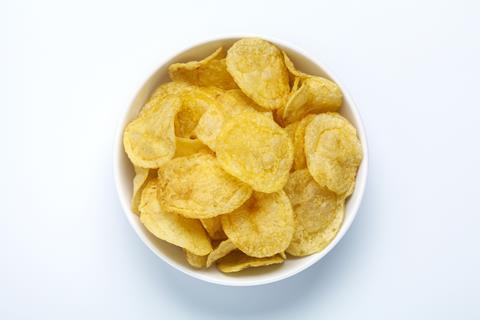
These figures haven’t just been driven by shoppers changing their behaviour. There are also many more healthy options on offer than last year, thanks to a surge in innovation.
In the face of reduced display for HFSS lines, suppliers have rushed to come up with NPD that can be sited prominently in-store – driving a similar level of change to that seen before the sugar levy in 2018, which drove a boom in sugar-free soft drinks.
In the case of pizzas, Goodfella’s and Dr Oetker have both launched non-HFSS lines. In crisps, brands including Tyrrells, Kettle Chips and Walkers have unveiled compliant snacks over the past year.
Many of these new lines will be cannibalising sales from elsewhere in their portfolios. “Switching from HFSS lines is a key driver of the non-HFSS growth, although we can’t say if shoppers are aware that they are switching,” says Kantar’s Ball.
But that’s not the only thing that’s going on. Looking at total sales, many of these typically unhealthier categories have actually received a boost overall.
Take pizza, which grew its value by 13.3% in the full year to 17 July [Kantar]. What’s more, units have grown 2.7%, at a time when volumes in total grocery are suffering. The suggestion is these non-HFSS lines are recruiting new shoppers to the category, or convincing existing shoppers to up their consumption.
“Across food and drink, people are buying less stuff to manage spend but pizza and crisps are in pack growth, so it looks like HFSS has been good for them,” sums up Ball.
A similar halo effect is apparent across the whole of impulse, which has held on to its volumes in a tricky climate. While HFSS impulse lines have stagnated, unit sales of non-HFSS lines are up 5.6% to top £5m [NIQ 52 w/e 3 June 2023].
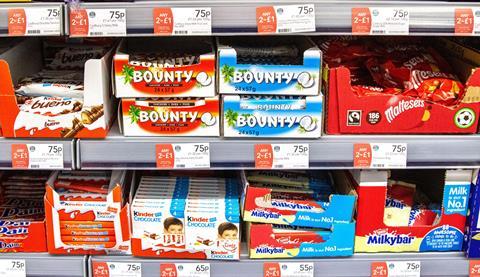
Tough categories
The trouble arises when reformulation is tricky, like in confectionery. While it’s relatively easy to create sugar-free sweets, it’s nigh on impossible to create a palatable non-HFSS chocolate.
In the face of these challenges, total confectionery has suffered a sales slump. The 7% growth in value has been driven by higher prices – units have fallen 3.4% [NIQ 52 w/e 3 June 2023].
HFSS-compliant confectionery – mostly sweets made with sweeteners – has grown value by 27.7% on units up 11.1%. But it’s a tiny proportion of the market: non-HFSS products only account for 6% of units sold.
The decline in purchases of chocolate and sweets is at odds with what might be expected during a cost of living crisis. “Normally categories such as confectionery do tend to do well in hard times, but we are not seeing that now,” says Kantar’s Ball. “In sugar confectionery, the non-HFSS element is far outgrowing HFSS, even though it remains comparatively small.”
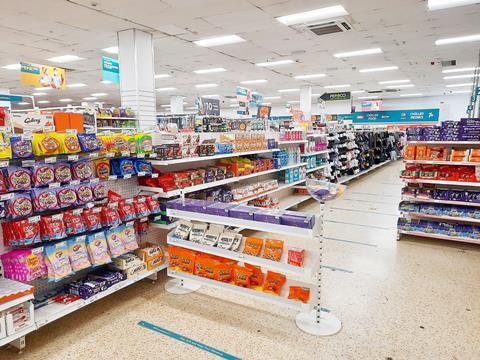
This suggests any lipstick effect – the tendency for consumers to treat themselves with affordable luxuries in response to economic hardship – has been dampened in confectionery by the HFSS regulations.
This makes sense, given how reliant confectionery is on those display areas that are now off limits. Encouraging impulse purchases through prominent spots in store, like till points, is key for this market.
In fact, a 2020 study showed 34% of sweets and chocolate sales are made on impulse, versus a 21% grocery average [Shopper Intelligence]. Now prime display spots are no longer available, it makes sense that sales have taken a hit.
So far, chocolate that is healthier – reformulated to contain less sugar – still falls under the definition of HFSS. It means suppliers still face display restrictions, while struggling to convince shoppers of their taste.
Those challenges show in reduced-sugar efforts. Nestlé axed its 30% less sugar line Milkybar Wowsomes in 2020 after less than two years on shelf. The 30% Less Sugar Dairy Milk line, launched by Mondelez in 2019, achieved sales of less than £1m last year after sinking by 47.3% [NIQ 52 w/e 31 December 2022].
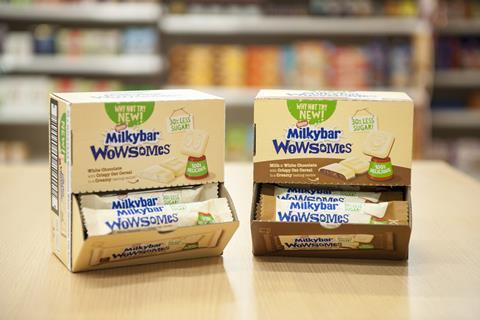
Mondelez is now betting on R&D to solve the issue. In December, it announced it had patented technology that will allow it to develop versions of its bestselling chocolates with 75% less sugar.
Not that everyone in confectionery is suffering. Three of the UK’s top 10 chocolate and five of the top 10 sweets brands shifted more packs in the year to 5 August [NIQ].
There are multiple reasons for this, of course – some have had big distribution gains or have been buoyed by NPD. But many have been promoting hard to lure more shoppers down the core aisle.
Packs have also been getting smaller to maintain price points that are attractive to shoppers. While confectionery sales by weight are down 3.2%, sales of physical packs are down by a lower rate of 2.8% [NIQ] – a telltale sign of shrinkflation.
“Brands know they can adjust the weight of their products without needing to call that out on pack,” says an industry source. “If you change the pack size by more than 10% you have to change the barcode, so for some of the larger sharing bags this shrinkflation has become an annual process over a number of years that allows them to maintain price points. A lot of players have been taking advantage of this lately.”
Indeed, in 2022 Mondelez shrank the size of Dairy Milk sharing slabs from 200g to 180g. Ahead of last Christmas, Nestlé shrank the size of its Quality Street sharing tubs from 650g to 600g and its cartons from 240g to 220g. And in recent years, Mars Wrigley has shrunk Maltesers sharing bags from 189g to 175g, and swapped 23g Twix bars for 20g bars in multipacks.
It shows price is clearly paramount for confectionery brands as they face the dual challenges of HFSS and the cost of living crisis. “Brands have been promoting products from shelf, using loyalty card promotions to qualify for the biggest discounts and innovating to maintain brand relevance and drive consumer footfall down the main aisles,” says James Lamplugh, sales director at Reapp, a software provider that works with brands to drive sales growth and manage stock.
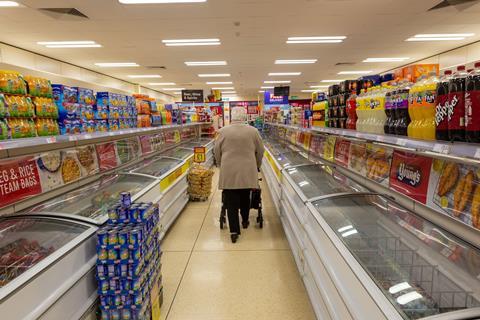
In some cases, that has helped avoid a downturn in sales. Across certain chilled desserts brands, “sales value has increased significantly, as have volumes”, Lamplugh says.
Nevertheless, it’s important to note that Reapp’s examples, which include 75% monthly unit growth for one chilled dessert player and a 4% increase for a chocolate manufacturer, are the exception rather than the rule when it comes to the impact of HFSS.
Indeed, health campaigners are generally positive about the first year under the rules, and the sales shift towards non-HFSS lines.
“It makes complete sense that sales of confectionery and other HFSS products have dropped because people, whether they are health-conscious or not, tend to respond to promotions in impulse locations in the same way,” says Dr Kawther Hashem, co-founder of the Action on Sugar campaign. “If they are highly visible, people are more likely to buy them.”
Although Action on Sugar is disappointed by the rowback on further restrictions – the ban on volume promotions was postponed this year due to the feared impact on prices – Hashem is “generally positive.” Especially as many of the big retailers have voluntarily embraced those measures.
Obesity Health Alliance (OHA) director Katharine Jenner is generally “incredibly impressed” with the way the big retailers have responded to the rules. She says this includes “not just the fancier ones but the budget supermarkets too”.
In October, the OHA will publish a study into which retailers are sticking closest to the rules (or not). It will single out Tesco, Sainsbury’s, Waitrose and Marks & Spencer for good compliance, Jenner says.

Lack of enforcement
However, Jenner also points to some examples of “atrocious” compliance. She fears certain retailers are being allowed to break the rules. “I don’t think Trading Standards have enough support, capacity or training to implement the rules,” she says.
Indeed, The Grocer revealed in May the government was providing less than £35k a year to Trading Standards in England – less than £250 per local authority – to enforce the rules.
The Department for Health & Social Care also has no idea how many enforcement actions had been issued. When asked this week, a spokesman said: “We don’t hold this information.”
Hashem at Action on Sugar says “there’s little evidence that compliance with the rules is being monitored or enforced around the country”. She believes some retailers are also actively looking for loopholes.
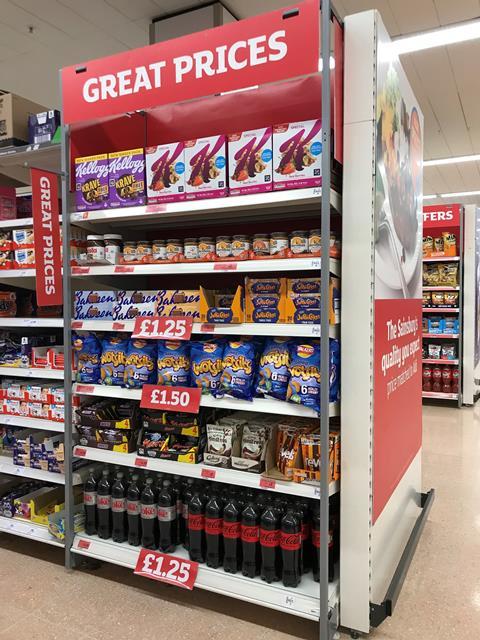
This could explain the varied experience of one well-placed industry source. “Compliance in general is almost 100% in Tesco and Sainsbury’s but it varies a lot in others. In some retailers it’s terrible in terms of free-standing display units and gondola ends,” they say. “Some are being wilfully disobedient and selling promotional space.”
“[At one national retail chain] it’s clear that they’ve told store managers to f*** it and send people to head office if they complain,” the source adds. “But in other cases, non-compliance is either down to misunderstanding or because stores are so understaffed people are just acting on force of habit.”
He’s not the only one to suggest the rules are too complex. Action on Sugar is currently surveying store managers around the UK on how well HFSS is understood. While understanding may be high at the likes of Tesco, where Hashem reports “senior people are working with staff to ensure they understand the rules”, that could well be lower at smaller operations.
“It’s clear that they’ve told store managers to f*** it and send people to head office if they complain”
Some of the regulations are indeed complex. For example, they state HFSS items “should not be placed at any point within the prohibited store entrance area”. However, the area prohibited depends on how large the store is. In a 2,000 sq ft store, HFSS items cannot be placed with 2.4 metres of the entrance; in a store of 10,000 sq ft, HFSS items cannot be within 5.3 metres.
In a similarly complex clause, HFSS items are not allowed within two metres of checkouts or designated queueing areas unless they are placed in an aisle (but not an aisle-end). And though aisle-end displays are off limits, this only applies to pre-packaged goods – meaning unpackaged goods such as pick ‘n’ mix sweets and doughnuts are technically allowed.
Spot checks of stores in Brighton & Hove by The Grocer did reveal generally good levels of compliance. Although arguably even if the letter of the law is being obeyed, the spirit isn’t: chocolate and sweets were in some key positions in a Poundland outlet in the city centre and an Iceland in Hove.
Products such as chocolate, biscuits and full-sugar drinks were seen in multiple locations throughout the stores – including store entrances and queueing areas. Iceland declined to comment when shown photographic evidence from inside the store, but Poundland was more vocal in its response.
“It would be totally incorrect to suggest we’re ignoring the rules,” said a spokesman for Poundland when shown photos of the store, which has a floor area of 7,941 sq ft across two levels. “We’ve created very detailed, bespoke compliant merchandising briefs for every single store to apply the HFSS regulations as it relates to that store’s size. Where we find a store that’s out of compliance, we will endeavour to put that right.”
At least someone will. Because there’s little evidence of authorities enforcing the rules. So ultimately, it’s down to the retailers to take responsible action to fight Britain’s bulge.
What we found in Poundland and Iceland
Poundland and Iceland have been singled out for some prominent displays of HFSS goods by industry sources. So, we headed down to two local outlets to see how they were merchandising items like sweets and chocolate.
Here’s what we found…
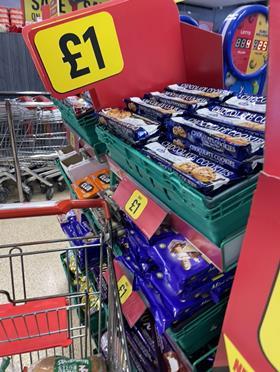
Iceland
54 Blatchington Road, Hove
Entrance: Sweets, chocolate biscuits, shortbread and sponge puddings fill units to the immediate right of the store entrance.
Inside the store: Chocolate, cakes, biscuits and chocolate-filled advent calendars fill shelves above freezer units throughout the store.
Checkouts: Pastries, chilled full-sugar soft drinks and crisps are stocked at till points.
Response: We approached Iceland for a response to our findings but it declined to comment.

Poundland
166-168 Western Road, Brighton
Inside the store: The main soft drinks and snacks fixtures are to the rear of the store.
Approach to tills: More full-sugar soft drinks, biscuits and confectionery.
Response: “It would be totally incorrect to suggest we’re ignoring the rules – we’ve created very detailed, bespoke compliant merchandising briefs for every single store to apply the HFSS regulations as it relates to that store’s size. Where we find a store that’s out of compliance we will endeavour to put that right,” said a spokesman for Poundland.
One year on: Have HFSS rules made any difference?
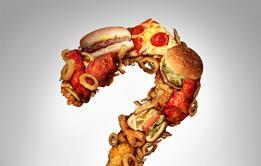
It’s been a year since the government brought in display restrictions on HFSS products. Now the sales data is in. So what has been the impact, and how uniform is compliance among retailers?
 Currently
reading
Currently
reading
One year on: Have HFSS rules made any difference?
- 2























No comments yet